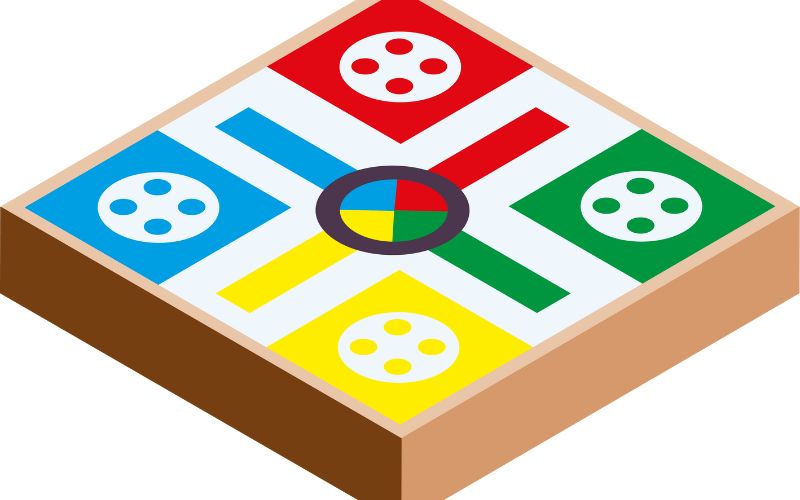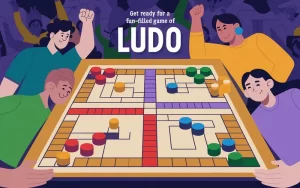Ludo game, a widely cherished boardplay, has a long-standing reputation for being a source of joy and entertainment for players of all ages. Its roots trace back to ancient Indian games, evolving over time to become a staple in family gatherings, social events, and casual game nights. The game’s simplicity, paired with a strategic edge, makes it both engaging and easy to pick up.
Understanding the Ludo Game: A Brief Overview
Ludo is typically played by 2 to 4 participants, with each player controlling tokens that start in their home base. The objective is to move all of your tokens around the board and into the central finish area, known as the home triangle, before your opponents do. Players roll dice to determine the movement of their tokens, and the race around the Ludo board begins.
One of the exciting aspects of the game is that a player can send another player’s token back to their starting position by landing on the same square, adding an element of rivalry. This makes the game not only fun but also thrilling with every roll of the dice.
Ludo Game Rules: How to Play

While playing may seem straightforward, a solid understanding of the ludo game rules is crucial for players to strategize and increase their chances of winning. Below are the key rules of the Ludo game:
Setting Up the Game: The Ludo board features four quadrants, each corresponding to a specific color (red, yellow, blue, green). Players select a color and place their four tokens in the matching starting area.
Rolling to Start: To move a token out of the base, a player must roll a 6 on the die. Once a 6 is rolled, the player can bring a token onto the starting point on the board. Rolling a 6 also grants the player another turn.
Movement on the Board: Players take turns rolling the die and moving their tokens forward by the number of spaces shown on the die. The goal is to move the tokens around the board’s track and enter the safe home triangle.
Knocking Out Opponents: A strategic element of Ludo is knocking out your opponent’s token by landing on the same square as them. When this happens, the opponent’s token is sent back to its starting position, and they must roll another 6 to re-enter the board.
Safe Zones: Some spaces on the board are designated as safe zones, where a token cannot be captured by an opponent. This adds a layer of strategy, as players often try to move their tokens to these safe zones for protection.
Winning the Game: The first player to successfully move all four of their tokens around the board and into their respective home triangle wins the game. Other players can continue to play for second and third place if desired.
The Ludo Game Board: A Visual Delight
The Ludo game board is a simple yet effective design that combines functionality with bright, engaging colors. Typically, the board is divided into four quadrants, each representing one of the player’s starting areas. The board’s layout consists of:
The Main Track: This is where the tokens move as players progress toward the finish. It wraps around the perimeter of the board and is divided into spaces, with each player’s path marked by their color.
Safe Squares: Some squares on the board are marked as safe zones, allowing tokens to avoid capture from opposing players. These are often located at specific intervals along the track.
The Home Column and Triangle: Once a player has completed a full circuit of the board, their tokens enter the home column, which leads to the center home triangle. Reaching the home triangle means the token is safe and closer to victory.
The design of the board makes the game easy to follow, and its bright colors add to the excitement, especially when players are competing for a spot on the board.
Strategies for Winning in Ludo
Though Ludo is based on luck due to the roll of the dice, strategic thinking can greatly enhance your chances of success. Here are some tips for gaining an advantage:
Use 6s Wisely: Rolling a 6 gives you the opportunity to bring a new token onto the board, but sometimes it might be better to move a token that’s already in play, especially if it’s close to being knocked out by an opponent.
Block Opponents: Positioning your token in key spots, especially near your opponent’s starting area, can force them to take longer to move their tokens out of the base.
Prioritize Safe Zones: Always try to move your tokens to safe zones, especially when opponents are nearby. This can prevent your token from being sent back to the start, saving precious time.
Keep Multiple Tokens Active: Having more than one token on the board increases your chances of success, as you can continue to make progress even if one of your tokens is captured.
Ludo in Modern Times: Digital Versions and Online Play
In recent years, the Ludo game has made a strong comeback with the rise of mobile apps and online platforms. Digital versions of the game have introduced Ludo to a global audience, making it easy for players to connect and compete from anywhere in the world. Online Ludo has seen immense popularity due to its simplicity, and players can now enjoy various modes, from quick matches to extended tournaments.
The rules of online Ludo remain largely the same as the physical version, but the experience is enhanced by features such as multiplayer modes, chat functions, and vibrant graphics. The convenience of playing from a smartphone or computer has breathed new life into this timeless game, allowing both long-time fans and new players to enjoy it at any time.
Conclusion
Ludo has stood the test of time due to its perfect balance of luck, strategy, and fun. Whether you’re playing the traditional board game version or enjoying the convenience of the digital format, the rules and principles remain as engaging as ever. The simplicity of Ludo, paired with its strategic elements, ensures that it continues to entertain players across generations.
So, gather your family or friends, roll the dice, and enjoy the excitement that this beloved game has to offer!







